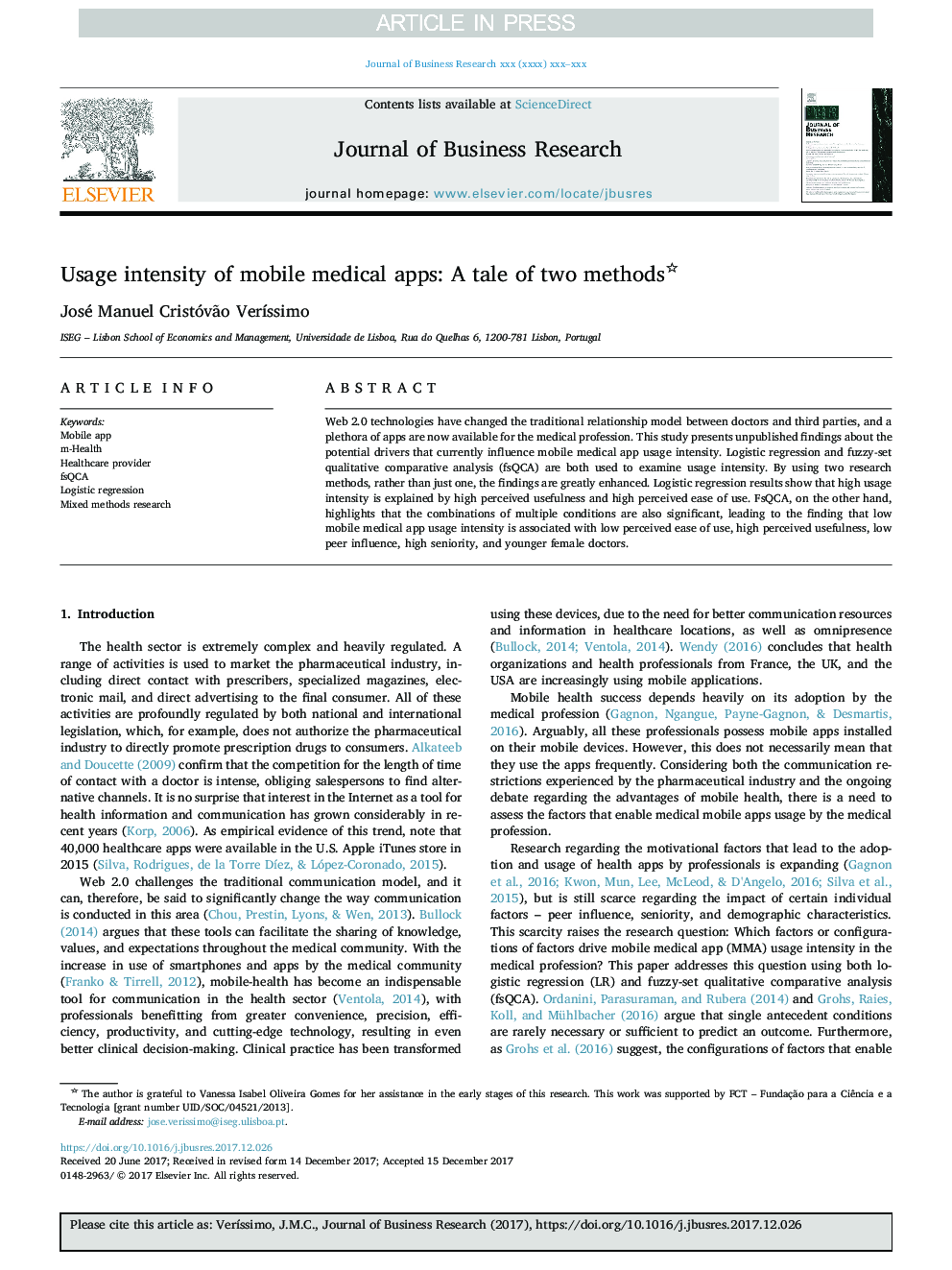| Article ID | Journal | Published Year | Pages | File Type |
|---|---|---|---|---|
| 7425053 | Journal of Business Research | 2018 | 6 Pages |
Abstract
Web 2.0 technologies have changed the traditional relationship model between doctors and third parties, and a plethora of apps are now available for the medical profession. This study presents unpublished findings about the potential drivers that currently influence mobile medical app usage intensity. Logistic regression and fuzzy-set qualitative comparative analysis (fsQCA) are both used to examine usage intensity. By using two research methods, rather than just one, the findings are greatly enhanced. Logistic regression results show that high usage intensity is explained by high perceived usefulness and high perceived ease of use. FsQCA, on the other hand, highlights that the combinations of multiple conditions are also significant, leading to the finding that low mobile medical app usage intensity is associated with low perceived ease of use, high perceived usefulness, low peer influence, high seniority, and younger female doctors.
Related Topics
Social Sciences and Humanities
Business, Management and Accounting
Business and International Management
Authors
José Manuel Cristóvão VerÃssimo,
